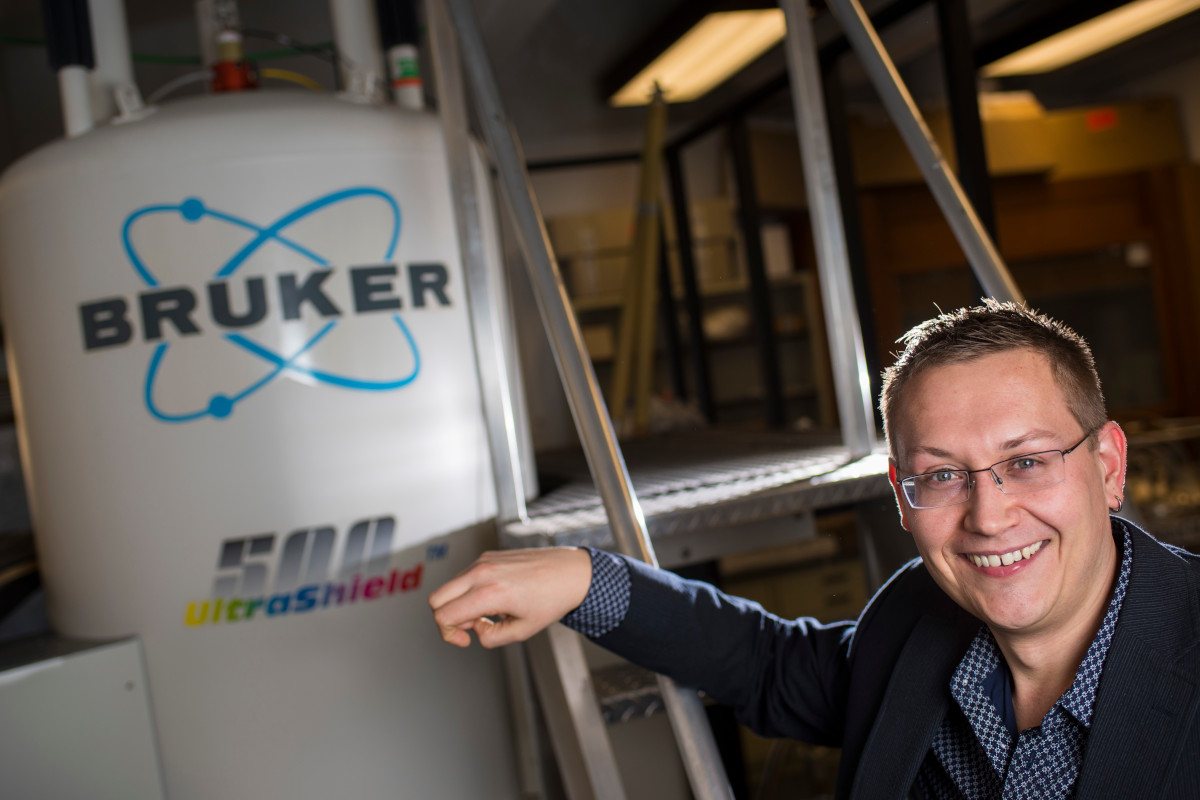
Vladimir Michaelis is the recipient of a new Canada Research Chair for his work in the University of Alberta’s Faculty of Science. Photo credit: John Ulan
Vladimir Michaelis is the recipient of a new Canada Research Chair for his work in the University of Alberta’s Faculty of Science. Michaeli is an associate professor in the Department of Chemistry.
The Canada Research Chair (CRC) program is an initiative of the Government of Canada, designed to improve our collective knowledge and quality of life, strengthen Canada's international competitiveness, and help train the next generation of highly skilled people through student supervision, teaching, and the coordination of other researchers' work.
Michaelis has been named the CRC in Magnetic Resonance of Advanced Materials. He and his colleague Peggy St. Jacques in the Department of Psychology are joining the ranks of this world-class group of scientists and scholars. Read more about St. Jacques’ research.
Hear more from Michaelis on the future of his research.
Tell me about receiving this CRC. What does this mean for you/your research?
As an emerging researcher, a CRC opens up research avenues previously closed to me. Funding and time are the most valuable commodities to me at this critical stage in my research and career that enable scientific advancement. The CRC program provides me the time to focus on my team and research, while the funding is critical to position us in addressing challenging problems facing Canadians with innovative solutions.
The best part is I am now more engaged with my team and am able to provide better technical and professional training. This will enable us to start focusing on more complex problems.
What is your vision for your research program?
My research is at the intersection of physical chemistry and materials science, where we use massive magnets to understand atomic-level structure and dynamics of elements that are one millionth the diameter of a human hair.
Similar to how MRI is used to diagnose a variety of conditions inside your body, we use solid-state and dynamic nuclear polarization (DNP) nuclear magnetic resonance (NMR) technology to image microscopic structures, understanding the arrangement of atoms, their chemical environments, and how modifying these aspects control the chemical and optical properties of materials.
We are currently focusing our efforts on energy-related materials composed of highly abundant and inexpensive elements. Our research vision is ultimately to deliver new materials to help Canada evolve its technology sector while diversifying the global energy economy.
As chemists, we are at the foundation, trying to understand why certain materials perform, while others fail and whether we can improve their performance.
Beyond these aspects, we are also developing new NMR approaches to study solids including labelling methods for biomarkers and porous materials that have applications as bioresorbable materials. Whether it is a health or energy related application, one hurdle we face is sensitivity. Magnetic resonance provides extensive detail to many chemical problems but inherently suffers from sensitivity. Our research laboratory is unique in Western Canada equipped with the only DNP NMR spectrometer, an emerging method that provides critical gains in sensitivity, enabling these new frontiers to be explored that were previously impossible. Research projects that are ongoing include hybrid and bioglass-ceramic medical implants, light-emitting diodes (LEDs), and materials that are of interest for energy generation and storage.
What makes the University of Alberta's Faculty of Science a great place to carry on this work?
The Faculty of Science is one of the most ambitious and supportive research communities I have encountered. I was attracted to this position five years ago, due to its historical and highly active NMR research program. My research lab is housed in the Department of Chemistry which supports an advanced solid- and liquid-state NMR facility managed by amazing NMR scientific staff.
Our solid-state facility is state-of-the-art. Access to this equipment, the opportunity to offer this training to students, and coupling this with my research expertise in NMR and the U of A’s strengths in materials science is game-changing. We have amazing colleagues in chemistry, physics, engineering and Earth and environmental science that contribute to new insight, excitement and scientific questions.